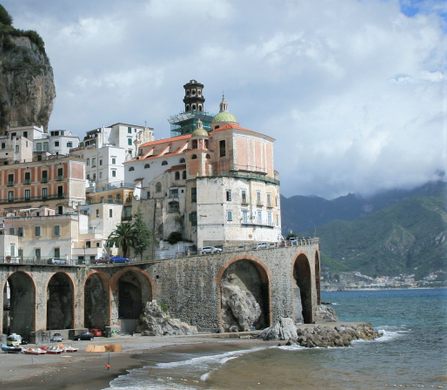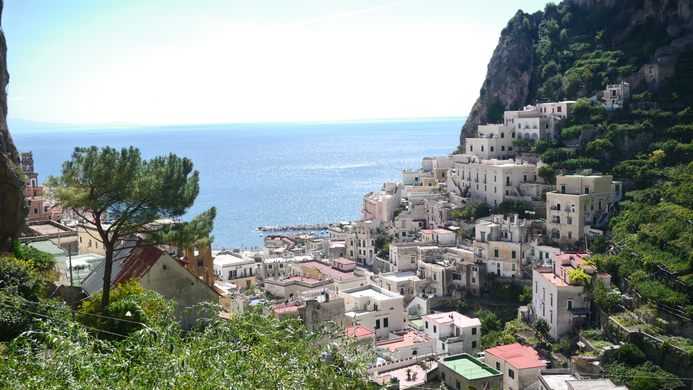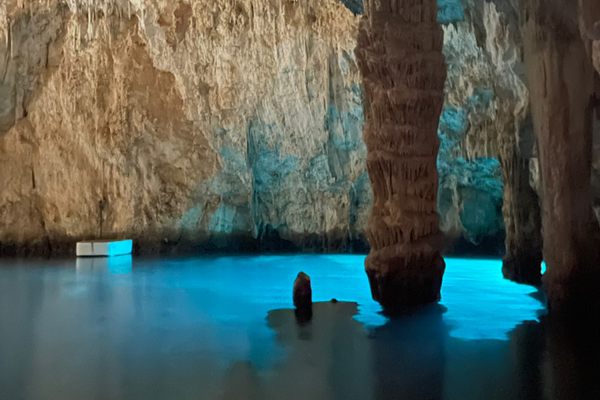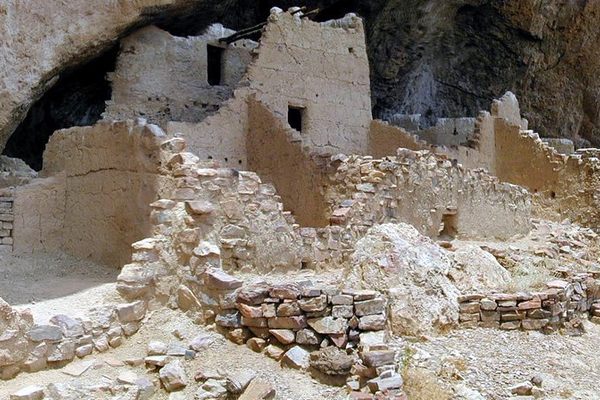Atrani
This seaside Italian village doesn't just look Escher-esque, it actually inspired the mind-bending artist.
Italy’s Amalfi Coast, with its cliff-perched houses and harrowing roads, has mesmerized many visitors. One Amalfi village in particular became a lifelong fascination for M.C. Escher, the 20th-century Dutch artist and illustrator, and he revisited it repeatedly in his works.
Atrani, located just east of Amalfi, near the center of its namesake coast, resembles a fantasy castle: A series of tall arches springs from the sea to support an acute curve in the cliff-hugging coast road. Within this hairpin loop, a 17th-century church lifts its bell-tower skyward, while the arches below form a portal between Atrani’s tiny beach and its vest-pocket town square. Whitewashed houses enclose the square and tumble up the hillsides, conjoined by twisted alleys so narrow that neighbors can pass a cup of sugar from one kitchen window to another. To walk in these disorienting lanes is like stepping into one of Escher’s “impossible spaces,” where water seems to flow uphill and infinite staircases zigzag back onto themselves.
The artist himself first visited in 1931. The lanky, eccentric, spade-bearded Escher must have made an impression on the residents, crisscrossing Atrani in knickerbocker trousers and argyle socks, and sketching the village from high cliffside eyries and low, burrowed stairwells. He produced several images of Atrani around this time, including drawings, lithographs, and woodcuts. One of Escher’s earliest wood engravings, Covered Alley in Atrani (Coast of Amalfi) (1931), depicts a real-life arrangement of stairways ascending and descending through arches in a way that foreshadows some of his later fantasy works.
Escher drew lifelong inspiration from Atrani, and as one exhibit of his works has noted, “his most striking use of the town is the place it occupies in his metamorphoses.” These were a series of three panoramic woodcut prints, executed over a period of decades, in which seemingly unrelated subjects were joined into one continuous image by the gradual variation of repeated patterns.
In Metamorphosis I (1937), a straightforward image of Atrani’s church blends into a stylized depiction of its cliffside houses, and then into further geometrical and whimsical motifs. Metamorphosis II (1940) places Atrani into a longer series of patterns, between cubic shapes on one side and a chessboard still-life on the other. And the epic Metamorphosis III (1968) sets the iconic Atrani image among nearly 22 feet of continuously tessellated cubes, birds, boats, fish, chessmen, and other shapes.
Escher died in 1972, and although decades have passed since his visits, Atrani hasn’t changed much. The road still encircles the church like a ribbon tied in a bow, the zigzag alleys and stairways still bewilder visitors, and artists seeking inspiration still carry their sketchbooks up the surrounding hillsides.
Know Before You Go
The SITA buses that ply the Amalfi Coast road stop at Atrani. You can also take a ferry to the town of Amalfi and then walk to Atrani in 15 minutes. To avoid walking through the vehicle tunnel, you can cut across the terrace of the cliffside restaurant known variously as Zaccaria or Nostromo.



















Follow us on Twitter to get the latest on the world's hidden wonders.
Like us on Facebook to get the latest on the world's hidden wonders.
Follow us on Twitter Like us on Facebook